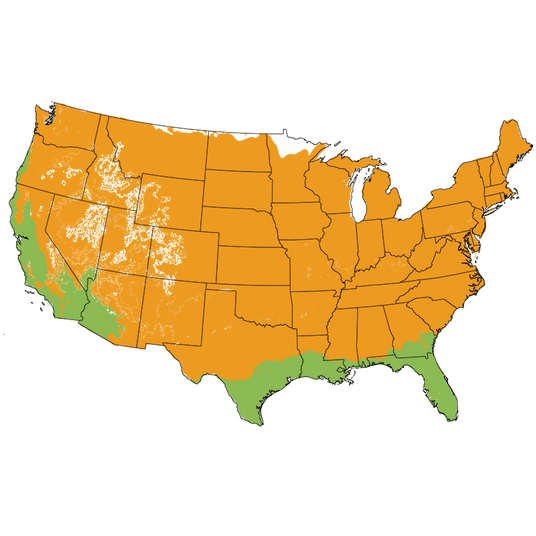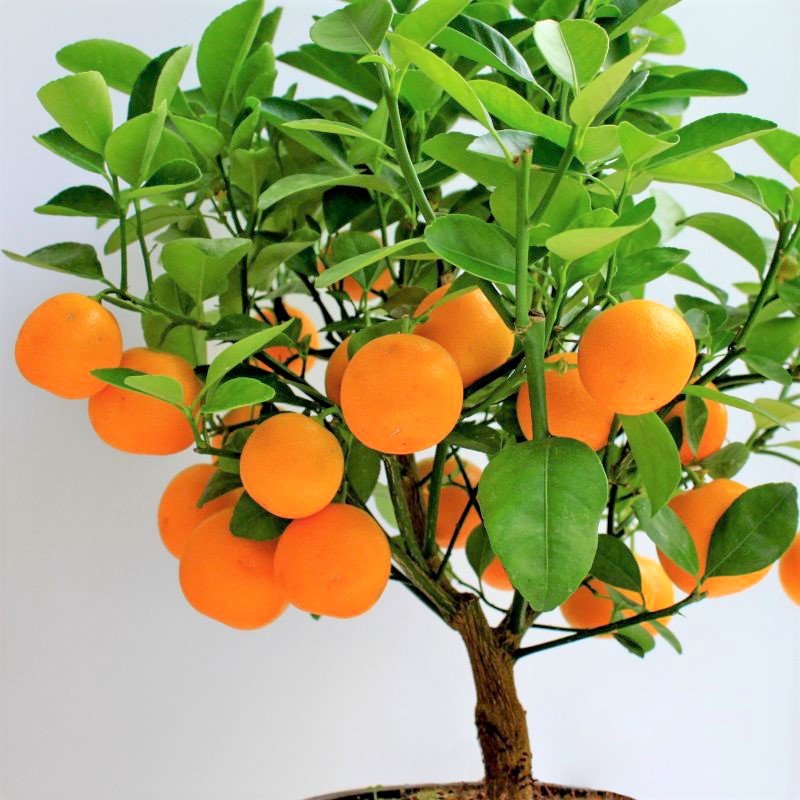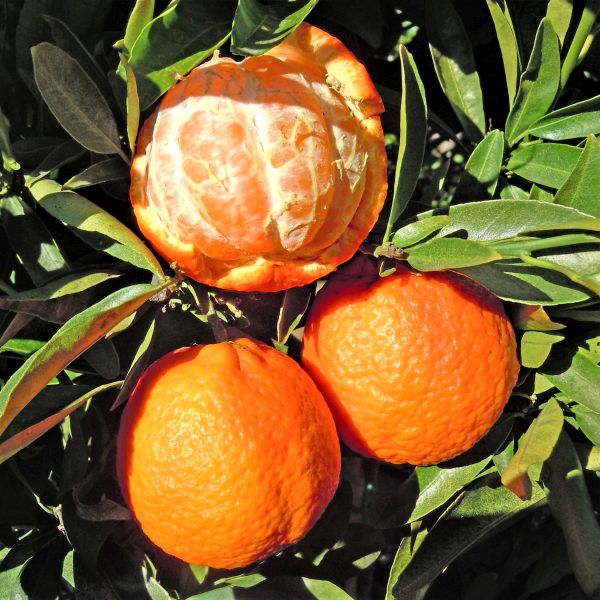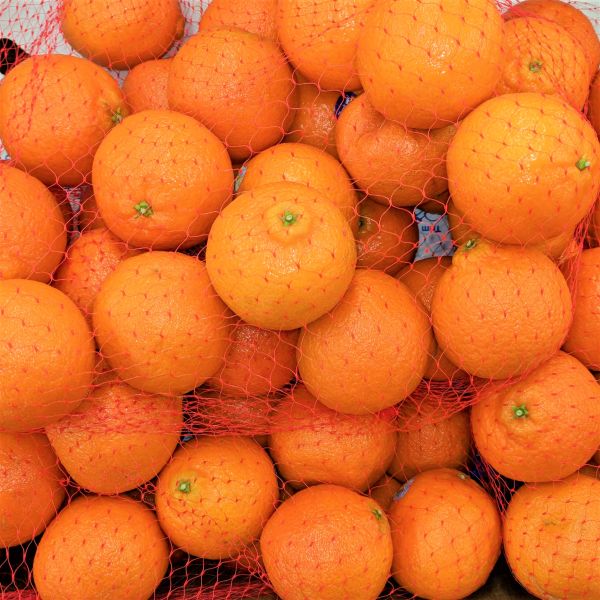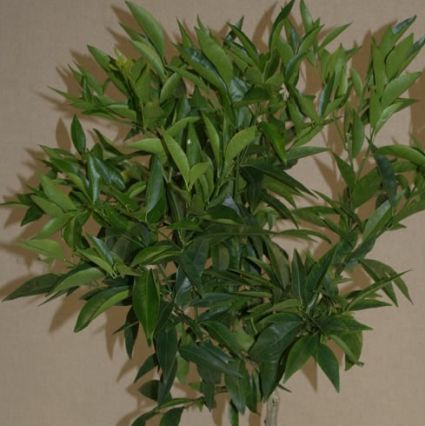Clementine Mandarin Orange Tree
Citrus reticulata 'Clementine'
Plant Sentry™
Plant Sentry™

Plant Sentry™ Protected
Your order is protected by our compliance system that:
- Prevents restricted plants from shipping to your state
- Ensures plants meet your state's agricultural requirements
- Protects gardens from invasive pests and diseases
Delivery and Shipping
Delivery and Shipping
Delivery and Shipping
Fast, Safe Plant Delivery
Ships in 3-4 business days • Tracking provided • Weather protected
| Under $50 | $9.99 |
| $50 - $99.99 | $14.99 |
| $100 - $149.99 | $16.99 |
| $150 - $198.99 | $24.99 |
| $199+ | FREE |
✓ Zone-specific timing • ✓ Professional packaging • ✓ Health guarantee
Understanding Plant Options
Nature Hills offers plants in two main formats:
- Container Plants: Grown in pots with soil, sized by container volume and plant age
- Bare Root Plants: Dormant plants without soil, sized by height measurements
Container Plant Sizes
Container sizes indicate plant age and growing capacity rather than liquid volume equivalents. Our containers follow industry-standard nursery "trade gallon" specifications, which differ from standard liquid gallon measurements.
Young Plants (6 months to 18 months old)
| Container Size | Actual Volume | Metric Equivalent |
|---|---|---|
| 2" x 2" x 3" | 0.18 - 0.21 dry quarts | 0.20 - 0.23 dry liters |
| 4" Container | 0.31 - 0.87 dry quarts | 0.35 - 0.96 dry liters |
| 4.5" Container | 0.65 dry quarts | 0.72 dry liters |
| 6" Container | 1.4 dry quarts | 1.59 dry liters |
| 1 Quart | 1 dry quart | 1.1 dry liters |
| 5.5" Container | 1.89 dry quarts | 2.08 dry liters |
Established Plants (18 months to 2.5 years old)
| Container Size | Actual Volume | Metric Equivalent |
|---|---|---|
| 2 Quart | 2 dry quarts | 2.2 dry liters |
| #1 Container | 2.26 - 3.73 dry quarts | 2.49 - 4.11 dry liters |
| 5" x 5" x 12" | 3.5 - 4.3 dry quarts | 3.85 - 4.74 dry liters |
Mature Plants (2-4 years old)
| Container Size | Actual Volume | Metric Equivalent |
|---|---|---|
| #2 Container | 1.19 - 1.76 dry gallons | 5.24 - 7.75 dry liters |
| #3 Container | 2.15 - 2.76 dry gallons | 8.14 - 12.16 dry liters |
Large Plants (3-5 years old)
| Container Size | Actual Volume | Metric Equivalent |
|---|---|---|
| #5 Container | 2.92 - 4.62 dry gallons | 12.86 - 20.35 dry liters |
| #6 Container | 5.25 - 6.01 dry gallons | 23.12 - 26.42 dry liters |
| #7 Container | 5.98 - 6.53 dry gallons | 26.34 - 28.76 dry liters |
Bare Root Plants
Bare root plants are sold by height from the root system to the top of the plant. Plants may exceed minimum height requirements.
Common Sizes:
- Trees: 1 foot, 2 feet, 3 feet, 4 feet, 5 feet, 6 feet
- Shrubs & Perennials: 1 foot, 18 inches, 2 feet
Important Notes
Container Volume Specifications
- Trade Gallon Standard: Our containers follow industry-standard "trade gallon" specifications established by the American National Standards Institute (ANSI Z60.1) for nursery stock
- Volume Variations: Actual soil volume may vary due to plant root systems and growing medium settlement
- Age Indicators: Container size primarily indicates plant age and maturity rather than liquid volume equivalents
Growing Conditions
- Plant size can vary based on variety and growing conditions
- Container size helps indicate plant maturity and establishment level
- Larger containers generally mean more established root systems and faster landscape establishment
Seasonal Availability
- Bare root plants are available seasonally when dormant
- Container plants are available throughout the growing season
- Specific varieties may have limited availability in certain sizes
Questions?
For questions about specific plant sizes or availability, please contact our plant experts who can help you choose the right size for your landscape needs.

Plant Sentry™ Protected
Your order is protected by our compliance system that:
- Prevents restricted plants from shipping to your state
- Ensures plants meet your state's agricultural requirements
- Protects gardens from invasive pests and diseases
Plant Profile & Growing Essentials
Evergreen, Flowering, Fragrant, Edible, Self-pollinating, Ornamental Berries/Fruit, Heat Tolerant, and Container Friendly
Specifications
Specifications
-
Botanical Name
-
Height
-
Width
-
Growing Zones
-
Sunlight
-
Growth RateModerate
-
Flower Color
-
Leaf Color
-
Fall Color
-
Pollinator FriendlyYes
-
Pollinator Required
-
FragrantYes
-
Bloom PeriodLate Spring
Planting & Care
Planting & Care
Want the popular Clementine Mandarin Orange from the grocery store in your own backyard? It's easy to grow your own Mandarins! You'll enjoy perfectly sweet and delicious Mandarin Oranges that are so much better than store-bought when you grow your own!
Our seedless Clementine Mandarin Orange Tree (Citrus reticulata 'Clementine') is a twin of the ancient Chinese Canton Mandarin, beloved for its sweet and juicy flesh and distinct Mandarin flavor. This variety is completely seedless, making it even more fun to eat!
The Clementine Mandarin first arrived in the United States in 1909 and eventually became one of the most popular small Citrus varieties on the market. Although having all the qualities of a choice Citrus fruit, early ripening, juicy and sweet flavor, and mostly seedless, the small size of the Clementine was not in favor early on. Imagine that!
What it lacks in size, the Clementine Mandarin Orange makes up for in taste. The sweet flavor is hard to resist and ripens early, so it is one of the first Citruses you can harvest.
Easy to grow, the Clementine is an early-season Mandarin that ripens along with the popular Owari Satsuma Mandarin. While not as adaptable to the cold as the Owari, the Clementine is very well adapted to all typical Citrus growing areas and hothouse climates where it produces superior fruit. This is where the majority of the bagged Clementines are grown commercially.
Whether planted in the ground or grown in a container the Clementine Mandarin Orange Tree is a valuable asset!
The small Clementine Mandarin itself is an excellent eating fruit. The peel is smooth, bright orange, and easy to remove. The deep orange fruit can be easily separated into numerous segments and is almost always seedless, with only a hint of acid, just enough to bring out the wonderful flavor.
Clementine Mandarins Make Small, Healthy Snacks
In recent years, this smallest member of Mandarin fruit has quickly become one of the most well-known varieties. Once a cult following developed around its exquisite taste, the market followed. Bagged Mandarins offered at most grocery stores really made this cute little fruit a household staple!
The small, cute, sweet orange has found a home in lunchboxes across America. We love the convenience of this quick, simple, healthy snack food. Moms love them to fill their fruit bowls with a healthy option that kids appreciate. Clementine is quick, simple, and good for you, so what's not to love?
Sweet, juicy and oh-so-healthy! These are packed with antioxidants and vitamins! You can of course eat them fresh, juice them, or create tasty dishes with these sweet little gems!
By growing your own, you will know exactly what goes into, and onto your fruit! Boost food sustainability and fresh fruit access, without sacrificing any space in your landscape!
Using Clementine Mandarin Orange Trees In The Landscape
Not only are these delicious and beautiful fruits, but the tree itself is an outstanding specimen for edible landscaping in its own right! The Clementine Mandarin is a beautiful evergreen plant and the fragrant flowers and beautiful fruit make it very ornamental!
The glossy broad-leaf evergreen leaves shine in the sun and look great in your garden all year long! These trees can be planted in rows or groupings to create privacy throughout the year, either in containers or in the ground! Create linear hedgerows or pretty pops of greenery throughout the entire growing season and beyond, providing your landscape with a lush backdrop for your other shrubs and perennials.
Those gorgeous leaves carry a wonderful aromatic scent and further enhance the divine white waxy blossoms that appear in the spring and perfume the air!
Self-fertile, these Citrus trees won't need another tree for pollination, but having a second Mandarin around will certainly boost productivity. Ripening in between November and February (varying depending on your climate and your tree), you'll soon have a dramatic specimen with dangling orange orbs that will have everyone smacking their lips in anticipation!
In warmer growing zones, these Citrus Trees can be planted in the ground and would make the loveliest of privacy screens! Plant one as a focal point in your garden. The Clementine - also known as the Algerian Mandarin - has a wonderful display of bright, fragrant white flowers in the spring.
A great variety for container growing, enjoy the Clementine tree on your deck or in the garden in full sun. You will need to move your tree indoors to protect the delicate root system from freezing temperatures during the colder winter months! If you grow Citrus indoors year-round, you will need to help with pollination by dabbing a paintbrush from bloom to bloom to spread the pollen.
- Bright Orange Round Fruit
- Kids Love the Sweet Taste
- Seedless & Easy to Peel
- Famous Store-Branded Mandarin!
- Self-Fruitful & Early Ripening
- Glossy Broadleaf Evergreen Leaves
- Divinely Fragrant White Spring Blooms
- Container & In-Ground Specimens, Year-Round Greenery, Privacy & Hedges
#ProPlantTips for Care
Citrus Trees are full sun plants, needing a minimum of 6 hours of direct sunlight a day. More sun means stronger growth, more flowers, and therefore more fruit! Preferring morning sun to dry the leaves of dew, these plants also like good air circulation to keep the foliage healthy.
Citrus need very well-drained soils that don't hold excess moisture. Mound up your planting area if you suspect poor drainage and container plants need deep planters with plenty of drainage holes. They also prefer their soil on the acidic side.
Let these plants dry out slightly between waterings and never allow their roots to sit in water. Plants in containers will not need much water during their dormant winter indoors. Citrus trees will not tolerate standing water, so please don't overwater.
For lush plants with dark green leaves and plenty of fruit, set up a regular fertilizer routine, but use a light hand with fertilizers. For plants that aren't holding on to fruit, consider applying organic Citrus fertilizer monthly in spring and again in summer during the growing season. Feed planted Clementine container plants again right before you take them outside for the summer. Feed in-ground planted Clementines once during the dormant season.
Protecting Container Citrus From Cold
If you're growing these tropical trees in the ground in the lowest of their favored growing zones, they need to be planted in a sheltered spot to avoid the worst of the chill. If a spot like that is unavailable, then you are better off planting in a large, deep container.
In border-line growing zones, begin slowly acclimating your tree indoors or into a protected location, eventually moving your tree inside in bright indirect sun for the winter if the temperatures in your area ever dip below that 40°F range. In spring, reverse this process and begin acclimating your tree to again be back out in the full sun all summer. This reduces stress and leaf drop.
- Full Sun For Best Results
- Sharply Drained Soil
- Moderate to Low Moisture Needs
- Acidic Soil & Acid-Loving Citrus Fertilizer
- Tolerates High Heat
Don't forget to extend your harvest by adding other earlier and later Mandarin selections to your collection, like Pixie or Page. That way, you'll be able to enjoy delicious fruit for up to 10 months out of the year! Order yours today!
Convenient, Delicious Clementine Mandarin
The Clementine Mandarin has a long-debated history, the story being the several different possible origins of this most unique selection. No one can deny that the current impact of the Clementine in modern marketing has had a tremendous impact on the popularity of all Mandarins today.
The Clementine Mandarin story for many years was thought to begin in the late 19th century. It is told that one of several seeds was planted by Father Clement Rodier in his orphanage garden in Peres du Saint-Esprit at Misserghin near Oran, Algiers. This resulted in a unique but wonderful variety of Mandarin.
In 1902, the French botanist Louis Charles Trabut, renowned for his work with plants from Algeria and Tunisia, selected a few of the unique seedlings, which at that time he thought to be a cross between the very common Mediterranean Mandarin and a Willow-leafed Citrus, Citrus aurantium, a Bitter or Sour Orange variety. Talbut cited his seedling selections as being important Mandarins of Algerian origin. One of Trabut's selections was named Clementine by the Horticultural Society of Algiers, in honor of Father Clement Rodier.
By the mid-20th century, Trabut's suggested cross of Mediterranean Mandarin with Willow Leaf Sour Orange was being challenged, as well as the origin of the variety. By 1963, H. Chapot, the distinguished French Citrus Systematist who studied classifications of citrus varieties, had identified the Clementine as being identical to the Canton Mandarins widely grown in the Guangxi and Guangdong provinces of China. He suggested at the time that the Clementine was most likely of Asian origin.
Recent DNA research has shown the Clementine to be a cross of the Mediterranean Willowleaf Mandarin (Citrus x deliciosa) and some unknown sweet orange variety (Citrus x sinensis).
Introduced into the United States, it was first brought to Florida in 1909 and then to California in 1914. Immediately recognized for being seedless and early ripening, with the harvest most often beginning in November, the Clementine was quickly embraced by growers.
But the Clementine would prove to have challenges in growing. Farmers would work to overcome these and at the same time, the qualities of the Clementine were sought after by hybridizers looking for the seedless and early ripening qualities to include in their crosses. It is the parent variety of many of the most popular modern Mandarin hybrids today.
Due to this influence, Mandarins are fast becoming the most popular of the sweet Citrus sold and planted in the home garden.
